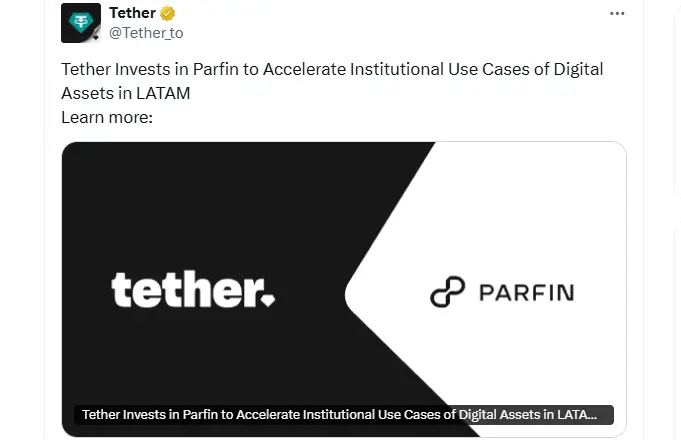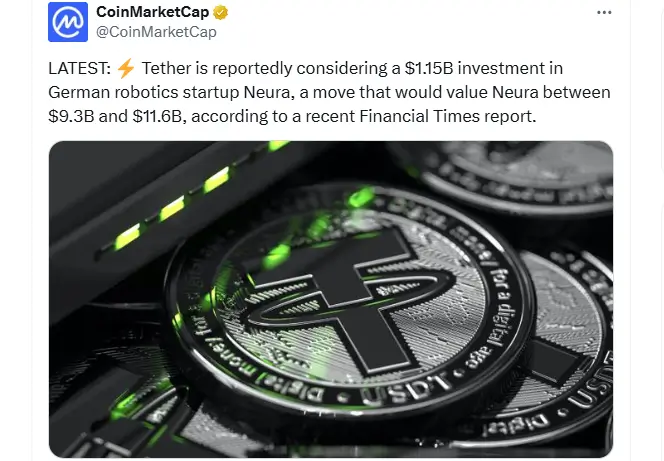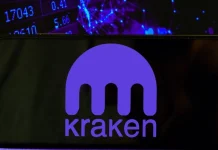
- Tether has announced an investment in Parfin to accelerate USDT adoption in LATAM.
- This comes as institutional demand grows with Tether expanding digital-asset use cases.
- Tether expands its reach with new investments as it moves further beyond stablecoins.
Tether, USDT’s mother company, has announced a strategic investment in Parfin, a digital-asset custody and tokenization platform operating across Latin America. The move comes in an effort to expand USDT adoption and strengthen blockchain-based settlement infrastructure in the region.
The company disclosed in a public statement that the joint effort aims to accelerate institutional use cases for digital assets, focusing on high-value settlement, tokenized receivables, and interoperable financial markets. Paolo Ardoino, the CEO of Tether, stated that the collaboration is a sign of belief that Latin America would become a world blockchain innovation center.
Tether Expands Institutional Reach in LATAM (Source: X)
He underscored that the strategy is to continue to focus on the expansion of USDT access to the financial institutions. Parfin’s CEO, Marcos Viriato, stated that the investment justifies Tether’s work in creating secure, compliant, and scalable infrastructure for tokenized applications.
The partnership comes at a moment when Latin America has registered close to $1.5 trillion of cryptocurrency transactions, as per recent on-chain data. This growth is largely influenced by institutional involvement, and the development in the region is creating a favorable environment.
The new collaboration will allow Parfin to continue growing its Rayls blockchain platform, which is meant to bridge blockchain-based settlement streams with financial institutions. Rayls encourages custody, tokenization, and programmable finance, and this fits into institutional compliance models.
The proposed integration of USDT in these systems will enable Tether to target credit markets based on trade finance receivables, commercial receivables, and card-based lending.
Tether’s Broader Investment Pattern Extends Beyond USDT and Stablecoins
This is not the only recent investment by Tether. Recent reports by credible sources claim that the company is negotiating to raise a one billion-dollar round of investment in Neura Robotics, which produces humanoid robots with AI technology in Germany.
Tether Invests in Neura Robotics (Source: X)
Neura is determined to manufacture five million robots by 2030 and has received at least one billion euros in pre-orders. The initiative underscores the fact that Tether is interested in frontier technology, such as robotics, artificial intelligence, agriculture, and digital media, in general.
This is invested using the profits earned by its stablecoin business, mostly through U.S. Treasury investments, bitcoin investments, and gold investments. The presence of invested capital in areas beyond the conventional crypto infrastructure is evidence of the desire of company to shape a range of different sectors, far beyond the stablecoin market.
The Parfin investment is no exception to this trend, as it has supported technology that helps the global move towards asset tokenization and programmable finance. Tether believes that these systems would play a crucial role in the following stage of financial modernization.
LATAM’s Digital-Asset Landscape Strengthens as Institutions Accelerate Adoption
The emergence of Latin America as a crypto-active area makes the investment of Tether more strategic. The use of institutional crypto has experienced a rapid increase over the last year, with more obvious regulatory frameworks in the large markets of Brazil, Argentina, and Mexico.
The developments provide a scenario where rails based on blockchain payments and tokenized instruments can scale. The institutions examining compliant custody, programmable settlement, and RWA tokenization are already utilizing the Parfin infrastructure of Parfin.
This will enable Tether to increase the availability of dollar-denominated liquidity in a region with high currency volatility and high demand for stable settlement assets by taking USDT a step closer to these systems.
The necessity of effective on-chain settlement is gaining more and more importance as more financial institutions consider the tokenized credit markets. USDT is a convenient tool to use in such applications due to its liquidity and international acceptability.












